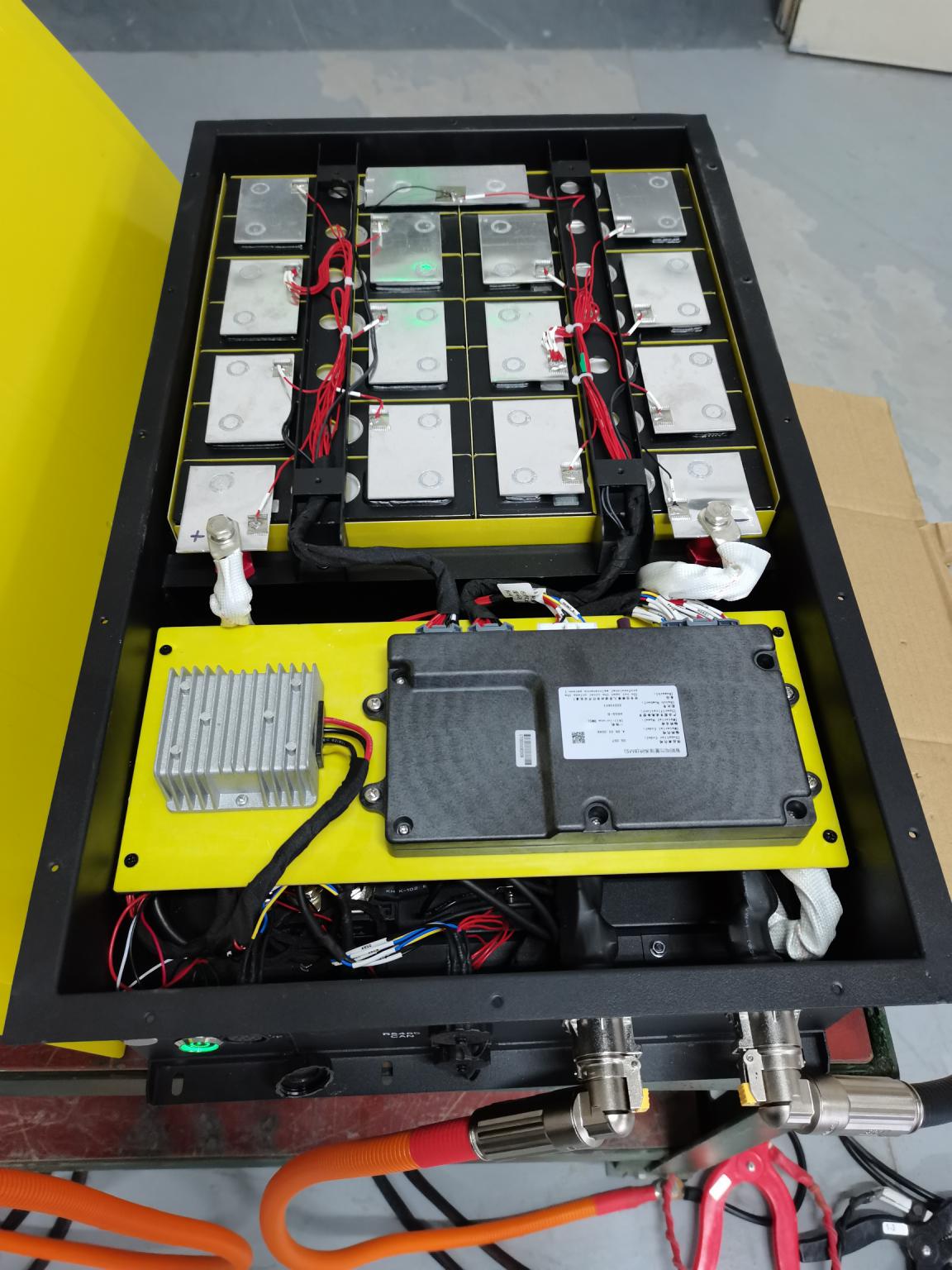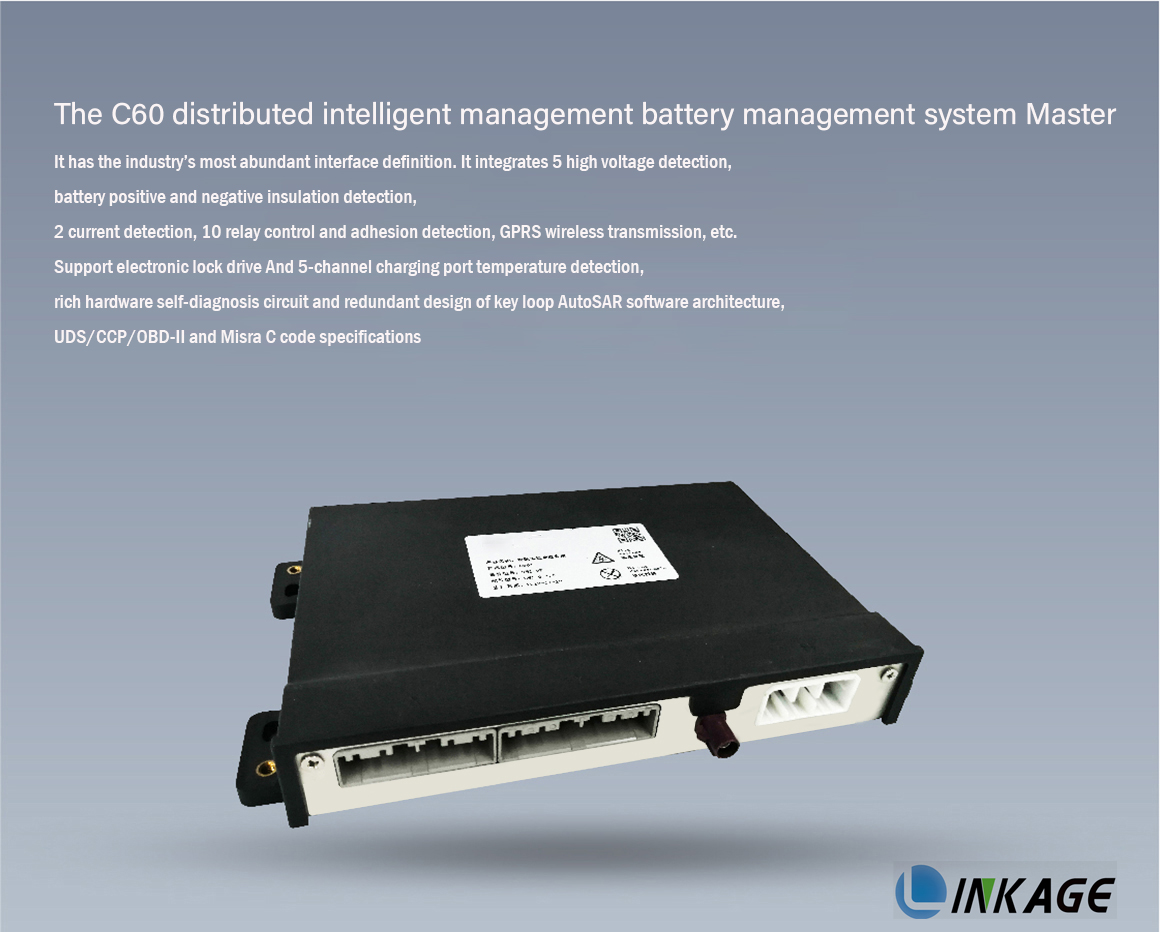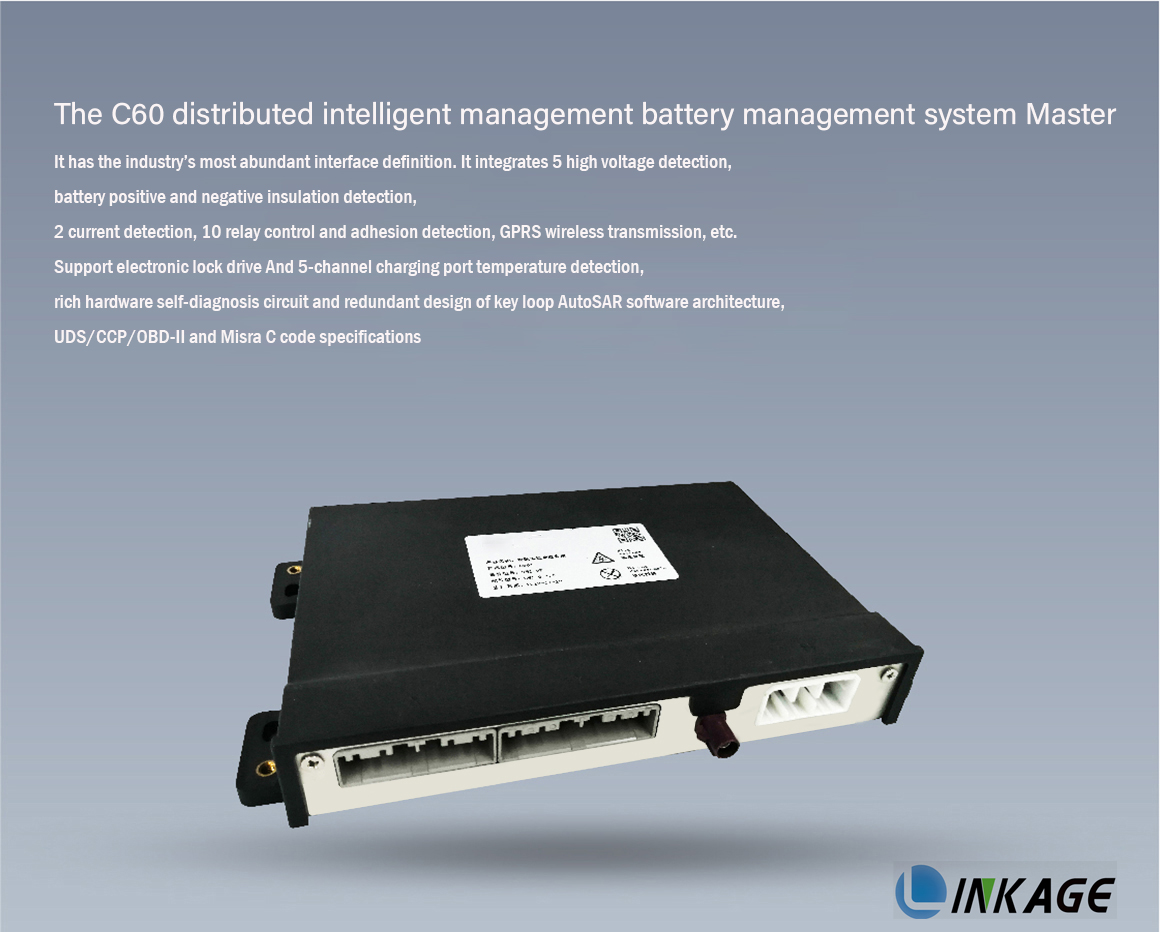- 23
- Mar
Pse zvogëlohet kapaciteti i baterive të litiumit, përmblodhi dikush më në fund
Bateritë litium-jon janë bateritë dytësore me rritje më të shpejtë pas baterive nikel-kadmium dhe nikel-hidrogjen. Vetitë e tij me energji të lartë e bëjnë të ardhmen e tij të duket e ndritshme. Megjithatë, bateritë litium-jon nuk janë perfekte dhe problemi i tyre më i madh është qëndrueshmëria e cikleve të ngarkimit-shkarkimit. Ky punim përmbledh dhe analizon arsyet e mundshme për zbehjen e kapacitetit të baterive Li-jon, duke përfshirë mbingarkimin, dekompozimin e elektrolitit dhe vetë-shkarkimin.





Lithium-ion batteries have different intercalation energies when intercalation reactions occur between the two electrodes, and in order to obtain the best performance of the battery, the capacity ratio of the two host electrodes should maintain a balanced value.
Në bateritë litium-jon, bilanci i kapacitetit shprehet si raporti i masës së elektrodës pozitive me elektrodën negative.
Domethënë: γ=m+/m-=ΔxC-/ΔyC+
In the above formula, C refers to the theoretical coulombic capacity of the electrode, and Δx and Δy refer to the stoichiometric number of lithium ions embedded in the negative electrode and the positive electrode, respectively. It can be seen from the above formula that the required mass ratio of the two poles depends on the corresponding Coulomb capacity of the two poles and the number of their respective reversible lithium ions.
foto
Generally speaking, a smaller mass ratio leads to incomplete utilization of the negative electrode material; a larger mass ratio may cause a safety hazard due to the overcharge of the negative electrode. In short, at the optimized mass ratio, the battery performance is the best.
Për një sistem ideal të baterisë Li-jon, bilanci i kapacitetit nuk ndryshon gjatë ciklit të tij, dhe kapaciteti fillestar në çdo cikël është një vlerë e caktuar, por situata aktuale është shumë më e ndërlikuar. Çdo reagim anësor që mund të gjenerojë ose konsumojë jone litium ose elektrone mund të çojë në ndryshime në balancën e kapacitetit të baterisë. Pasi të ndryshojë gjendja e bilancit të kapacitetit të baterisë, ky ndryshim është i pakthyeshëm dhe mund të grumbullohet përmes cikleve të shumta, duke rezultuar në performancën e baterisë. Ndikim serioz. Në bateritë litium-jon, përveç reaksioneve redoks që ndodhin kur jonet e litiumit deinterkalohen, ka edhe një numër të madh reaksionesh anësore, si dekompozimi i elektrolitit, shpërbërja e materialit aktiv dhe depozitimi metalik i litiumit.
Arsyeja 1: Mbi tarifim
1. Reagimi i mbingarkesës së elektrodës negative të grafitit:
Kur bateria është e mbingarkuar, jonet e litiumit reduktohen lehtësisht dhe depozitohen në sipërfaqen e elektrodës negative:
foto
The deposited lithium coats the negative electrode surface, blocking the intercalation of lithium. This results in reduced discharge efficiency and capacity loss due to:
①Reduce the amount of recyclable lithium;
②Litiumi i metalit të depozituar reagon me tretësin ose elektrolitin mbështetës për të formuar Li2CO3, LiF ose produkte të tjera;
③ Litium metalik zakonisht formohet midis elektrodës negative dhe ndarësit, i cili mund të bllokojë poret e ndarësit dhe të rrisë rezistencën e brendshme të baterisë;
④ Për shkak të natyrës shumë aktive të litiumit, është e lehtë të reagosh me elektrolitin dhe të konsumosh elektrolitin, duke rezultuar në një reduktim të efikasitetit të shkarkimit dhe një humbje të kapacitetit.
Fast charging, the current density is too large, the negative electrode is severely polarized, and the deposition of lithium will be more obvious. This is likely to occur when the positive electrode active material is excessive relative to the negative electrode active material. However, in the case of a high charging rate, deposition of metallic lithium may occur even if the ratio of positive and negative active materials is normal.
2. Reagimi pozitiv i mbingarkesës së elektrodës
When the ratio of positive electrode active material to negative electrode active material is too low, positive electrode overcharge is likely to occur.
The capacity loss caused by overcharge of the positive electrode is mainly due to the generation of electrochemically inert substances (such as Co3O4, Mn2O3, etc.), which destroy the capacity balance between the electrodes, and the capacity loss is irreversible.
(1) LiyCoO2
LiyCoO2→(1-y)/3[Co3O4+O2(g)]+yLiCoO2 y<0.4
Në të njëjtën kohë, oksigjeni i gjeneruar nga dekompozimi i materialit të elektrodës pozitive në baterinë e mbyllur litium-jon grumbullohet në të njëjtën kohë sepse nuk ka reaksion rikombinimi (siç është gjenerimi i H2O) dhe gazi i ndezshëm i krijuar nga dekompozimi. të elektrolitit, dhe pasojat do të jenë të paimagjinueshme.
(2) λ-MnO2
The lithium-manganese reaction occurs when the lithium-manganese oxide is completely delithiated: λ-MnO2→Mn2O3+O2(g)
3. The electrolyte is oxidized when overcharged
When the pressure is higher than 4.5V, the electrolyte will be oxidized to generate insolubles (such as Li2Co3) and gases. These insolubles will block the micropores of the electrode and hinder the migration of lithium ions, resulting in capacity loss during cycling.
Factors that affect the rate of oxidation:
Sipërfaqja e materialit të elektrodës pozitive
Current collector material
Agjent përcjellës i shtuar (karboni i zi, etj.)
The type and surface area of carbon black
Among the more commonly used electrolytes, EC/DMC is considered to have the highest oxidation resistance. The electrochemical oxidation process of solution is generally expressed as: solution→oxidation product (gas, solution and solid matter)+ne-
Oksidimi i çdo tretësi do të rrisë përqendrimin e elektrolitit, do të ulë qëndrueshmërinë e elektrolitit dhe në fund do të ndikojë në kapacitetin e baterisë. Duke supozuar se një sasi e vogël e elektrolitit konsumohet sa herë që ngarkohet, kërkohet më shumë elektrolit gjatë montimit të baterisë. Për një enë konstante, kjo do të thotë se ngarkohet një sasi më e vogël e substancës aktive, e cila rezulton në një ulje të kapacitetit fillestar. Përveç kësaj, nëse prodhohet një produkt i ngurtë, në sipërfaqen e elektrodës do të formohet një film pasivimi, i cili do të rrisë polarizimin e baterisë dhe do të zvogëlojë tensionin e daljes së baterisë.
Reason 2: Electrolyte decomposition (reduction)
Unë dekompozoj në elektrodë
1. Elektroliti zbërthehet në elektrodën pozitive:
The electrolyte consists of a solvent and a supporting electrolyte. After the cathode is decomposed, insoluble products such as Li2Co3 and LiF are usually formed, which reduce the battery capacity by blocking the pores of the electrode. The electrolyte reduction reaction will have an adverse effect on the capacity and cycle life of the battery. The gas generated by the reduction can increase the internal pressure of the battery, which can lead to safety problems.
Tensioni pozitiv i zbërthimit të elektrodës është zakonisht më i madh se 4.5 V (përkundrejt Li/Li+), kështu që ato nuk dekompozohen lehtë në elektrodën pozitive. Përkundrazi, elektroliti dekompozohet më lehtë në elektrodën negative.
2. Elektroliti zbërthehet në elektrodën negative:
The electrolyte is not stable on graphite and other lithium-inserted carbon anodes, and it is easy to react to generate irreversible capacity. During the initial charge and discharge, the decomposition of the electrolyte will form a passivation film on the surface of the electrode, and the passivation film can separate the electrolyte from the carbon negative electrode to prevent further decomposition of the electrolyte. Thus, the structural stability of the carbon anode is maintained. Under ideal conditions, the reduction of the electrolyte is limited to the passivation film formation stage, and this process does not occur when the cycle is stable.
Formimi i filmit pasivizues
Reduktimi i kripërave të elektrolitit merr pjesë në formimin e filmit të pasivimit, i cili është i dobishëm për stabilizimin e filmit të pasivimit, por
(1) The insoluble matter produced by the reduction will have an adverse effect on the solvent reduction product;
(2) Përqendrimi i elektrolitit zvogëlohet kur kripa e elektrolitit zvogëlohet, gjë që përfundimisht çon në humbjen e kapacitetit të baterisë (LiPF6 reduktohet për të formuar LiF, LixPF5-x, PF3O dhe PF3);
(3) Formimi i filmit të pasivimit konsumon jonet e litiumit, të cilat do të shkaktojnë çekuilibër të kapacitetit midis dy elektrodave për të zvogëluar kapacitetin specifik të të gjithë baterisë.
(4) If there are cracks on the passivation film, solvent molecules can penetrate and thicken the passivation film, which not only consumes more lithium, but also may block the micropores on the carbon surface, resulting in the inability of lithium to be inserted and extracted. , resulting in irreversible capacity loss. Adding some inorganic additives to the electrolyte, such as CO2, N2O, CO, SO2, etc., can accelerate the formation of the passivation film and inhibit the co-insertion and decomposition of the solvent. The addition of crown ether organic additives also has the same effect. 12 crowns and 4 ethers are the best.
Faktorët për humbjen e kapacitetit të filmit:
(1) Lloji i karbonit të përdorur në proces;
(2) Përbërja e elektrolitit;
(3) Additives in electrodes or electrolytes.
Blyr beson se reaksioni i shkëmbimit të joneve përparon nga sipërfaqja e grimcës së materialit aktiv në thelbin e saj, faza e re e formuar varros materialin aktiv origjinal dhe një film pasiv me përçueshmëri të ulët jonike dhe elektronike formohet në sipërfaqen e grimcës, kështu që spineli pas ruajtjes Polarizim më i madh se para ruajtjes.
Zhang found that the resistance of the surface passivation layer increased and the interfacial capacitance decreased with the increase of the number of cycles. It reflects that the thickness of the passivation layer increases with the number of cycles. The dissolution of manganese and the decomposition of the electrolyte lead to the formation of passivation films, and high temperature conditions are more conducive to the progress of these reactions. This will increase the contact resistance between the active material particles and the Li+ migration resistance, thereby increasing the polarization of the battery, incomplete charging and discharging, and reduced capacity.
II Mekanizmi i Reduktimit të Elektrolitit
The electrolyte often contains oxygen, water, carbon dioxide and other impurities, and redox reactions occur during the charging and discharging process of the battery.
Mekanizmi i reduktimit të elektrolitit përfshin tre aspekte: reduktimin e tretësit, reduktimin e elektrolitit dhe reduktimin e papastërtive:
1. Solvent reduction
Reduktimi i PC dhe EC përfshin reaksionin me një elektron dhe procesin e reaksionit me dy elektron, dhe reaksioni me dy elektron formon Li2CO3:
Fong et al. believed that during the first discharge process, when the electrode potential was close to 0.8V (vs. Li/Li+), the electrochemical reaction of PC/EC occurred on graphite to generate CH=CHCH3(g)/CH2=CH2( g) and LiCO3(s), leading to irreversible capacity loss on graphite electrodes.
Aurbach et al. kreu kërkime të gjera mbi mekanizmin e reduktimit dhe produktet e elektroliteve të ndryshme në elektrodat metalike të litiumit dhe elektrodat me bazë karboni, dhe zbuloi se mekanizmi i reagimit me një elektron të PC prodhon ROCO2Li dhe propileni. ROCO2Li është shumë i ndjeshëm ndaj gjurmëve të ujit. Produktet kryesore janë Li2CO3 dhe propyleni në prani të gjurmëve të ujit, por asnjë Li2CO3 nuk prodhohet në kushte të thata.
Restoration of DEC:
Ein-Eli Y raportoi se elektroliti i përzier me karbonat dietil (DEC) dhe karbonat dimetil (DMC) do t’i nënshtrohet një reaksioni shkëmbimi në bateri për të gjeneruar etil metil karbonat (EMC), i cili është përgjegjës për humbjen e kapacitetit. ndikim të caktuar.
2. Reduktimi i elektroliteve
Reagimi i reduktimit të elektrolitit përgjithësisht konsiderohet të jetë i përfshirë në formimin e filmit të sipërfaqes së elektrodës së karbonit, kështu që lloji dhe përqendrimi i tij do të ndikojnë në performancën e elektrodës së karbonit. Në disa raste, reduktimi i elektrolitit kontribuon në stabilizimin e sipërfaqes së karbonit, e cila mund të formojë shtresën e dëshiruar të pasivimit.
Në përgjithësi besohet se elektroliti mbështetës është më i lehtë për t’u reduktuar sesa tretësi, dhe produkti i reduktimit përzihet në filmin e depozitimit të elektrodës negative dhe ndikon në prishjen e kapacitetit të baterisë. Disa reaksione të mundshme të reduktimit të elektroliteve mbështetëse janë si më poshtë:
3. Reduktimi i papastërtive
(1) If the water content in the electrolyte is too high, LiOH(s) and Li2O deposits will be formed, which is not conducive to the insertion of lithium ions, resulting in irreversible capacity loss:
H2O+e→OH-+1/2H2
OH-+Li+→LiOH(s)
LiOH+Li++e-→Li2O(s)+1/2H2
The generated LiOH(s) is deposited on the electrode surface, forming a surface film with high resistance, which hinders Li+ intercalation into the graphite electrode, resulting in irreversible capacity loss. A small amount of water (100-300×10-6) in the solvent has no effect on the performance of the graphite electrode.
(2) The CO2 in the solvent can be reduced on the negative electrode to form CO and LiCO3(s):
2CO2+2e-+2Li+→Li2CO3+CO
CO will increase the internal pressure of the battery, and Li2CO3(s) will increase the internal resistance of the battery and affect the battery performance.
(3) Prania e oksigjenit në tretës do të formojë gjithashtu Li2O
1/2O2+2e-+2Li+→Li2O
Për shkak se ndryshimi potencial midis litiumit metalik dhe karbonit plotësisht të ndërthurur është i vogël, reduktimi i elektrolitit në karbon është i ngjashëm me reduktimin në litium.
Arsyeja 3: Vetëshkarkimi
Vetë-shkarkimi i referohet fenomenit që bateria humbet kapacitetin e saj natyrshëm kur nuk është në përdorim. Vetë-shkarkimi i baterisë li-jon çon në humbje të kapacitetit në dy raste:
One is the reversible capacity loss;
E dyta është humbja e kapacitetit të pakthyeshëm.
Humbja e kthyeshme e kapacitetit do të thotë që kapaciteti i humbur mund të rikuperohet gjatë karikimit, ndërsa humbja e pakthyeshme e kapacitetit është e kundërta. Elektrodat pozitive dhe negative mund të veprojnë si një mikrobateri me elektrolitin në gjendje të ngarkuar, duke rezultuar në ndërthurjen dhe deinterkalimin e joneve të litiumit, dhe ndërthurjen dhe deinterkalimin e elektrodave pozitive dhe negative. Jonet e ngulitura të litiumit lidhen vetëm me jonet e litiumit të elektrolitit, kështu që kapaciteti i elektrodave pozitive dhe negative është i pabalancuar dhe kjo pjesë e humbjes së kapacitetit nuk mund të rikuperohet gjatë karikimit. Të tilla si:
Elektroda pozitive e oksidit të manganit të litiumit dhe tretësi do të shkaktojnë efekt mikro-baterie dhe vetë-shkarkim, duke rezultuar në humbje të pakthyeshme të kapacitetit:
LiyMn2O4+xLi++xe-→Liy+xMn2O4
Solvent molecules (such as PC) are oxidized on the surface of conductive material carbon black or current collector as a microbattery anode:
xPC→xPC-radikal+xe-
Në mënyrë të ngjashme, materiali aktiv negativ mund të ndërveprojë me elektrolitin për të shkaktuar vetë-shkarkim dhe për të shkaktuar humbje të pakthyeshme të kapacitetit, dhe elektroliti (si LiPF6) reduktohet në materialin përçues:
PF5+xe-→PF5-x
Lithium carbide in the charged state is oxidized by removing lithium ions as the negative electrode of the microbattery:
LiyC6→Liy-xC6+xLi+++xe-
Factors affecting self-discharge: the manufacturing process of the positive electrode material, the manufacturing process of the battery, the properties of the electrolyte, temperature, and time.
